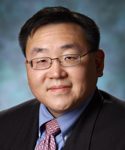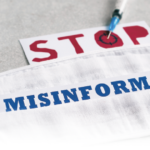Designer N95s
Whoever that mother was, she has my sympathies. Especially in times of crisis, the need to protect our loved ones intensifies to the point of madness.
For most of us, however, this need to protect extends well beyond our bloodlines.
Take Christian Siriano, for example. Mr. Siriano is a New York-based fashion designer whose couture label is worth over $5 million. And now he is sewing N95 face masks. He heard New York Gov. Andrew Cuomo declare the state was experiencing a desperate shortage of personal protective equipment. Mr. Siriano immediately reached out and volunteered his services and those of his staff. The Christian Siriano label has made more than 7,000 hand-sewn, fully certified N95 face masks, some of which are in use at New York Presbyterian Columbia University Irving Medical Center. And they are machine washable.2
The rest of the fashion industry followed his lead. The Kering Group, parent company of Balenciaga, Gucci and Saint Laurent (also known as Yves Saint Laurent), announced it would retool its businesses to produce respirators for the French health service.3
Not to be outdone, Louis Vuitton is making hand sanitizer, which it pledged to continue to supply to hospitals throughout France for free for as long as they need it.4
Instead of starting his subinternship in surgery, Rob was spending his Saturday morning helping healthcare workers register for fit testing for N95 respirators.
The fashion industry is not alone. Long before the Defense Production Act was invoked, the automakers Tesla, General Motors and Fiat Chrysler Automobiles pledged to redirect their factories toward the manufacture of ventilators.5 They are being assisted by Medtronic and Ventec Life Systems, which have managed to forgo the usual concerns over industry secrets and patent protection, because the need is so great.
All of this is a good reminder: Hope often comes from where you least expect it.
Desperate Times & Pitching In
Desperate times call for desperate clichés. Ironically, we often communicate our most heartfelt emotions through tired catchphrases. Be strong! Stay safe! I think it’s because finding our own words, sometimes, can cost us too much. This is most true when time is short and we are giving so much already. We use these phrases,
not for their semantic content, but for the emotions they carry. They are a bookmark, a promise, an I.O.U. for a deeper conversation we will have when the emergency has passed.
These are, indeed, desperate times. But desperate times have a funny way of bringing out the best in all of us. For every 20-something insisting on his right to party during spring break with 200 of his closest friends, another is waiting patiently outside a supermarket that opens an hour early for their elderly customers to ease their concerns over asymptomatic transmission of SARS-CoV-2. There are also reports from across the country of college students offering to run errands for their elderly neighbors who are too afraid to venture out themselves.
Medical students are finding other ways to contribute. I ran into Rob Young, a medical student who rotated on my service when I attended on an internal medicine service last year. As you may know, the Association of American Medical Colleges recommended suspending all rotations for medical students that involve direct patient contact.6 Instead of starting his subinternship in surgery, Rob was spending his Saturday morning helping healthcare workers register for fit testing for N95 respirators.
Other Johns Hopkins medical students are spending their third year of medical school reporting to a warehouse, where they are assigned a stapler and a hot glue gun, and spend the day assembling face shields for distribution to physicians on the front lines. Additionally, medical students at Hopkins and across the country have organized to provide free child care for physicians whose usual child care arrangements have been upended by COVID-19.
Some students are helping out on an even larger scale. Pooja Chandra, a first-year medical student at Harvard Medical School, Boston, realized almost no information on COVID-19 in languages other than English was available. She noted, “this makes it really difficult for patients with lower health literacy to know when and how to seek care, especially patients from immigrant backgrounds or non-English speaking communities.”7
Pooja went on to found the COVID-19 Health Literacy Project, comprising more than 175 medical students from 30 institutions. With the assistance of faculty reviewers, this group created and translated patient fact sheets on COVID-19 into 35 languages.8



